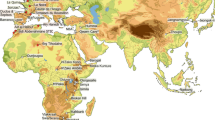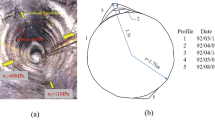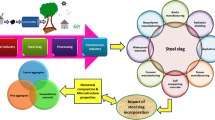Abstract
This article presents archaeometallurgical research of three types of metal objects excavated underwater from two shipwrecks in Israel: Tantura F (mid-seventh-end of eighth centuries ad) and Akko 1 (first third of nineteenth century). Both non-destructive and destructive methods were employed. The finds were manufactured by joining processes; therefore, the studies concentrated on metallurgical processes. However, these researches were multidisciplinary, combining typological analyses of the archeological objects, as well as the historical perspective. The first case study is of an iron anchor from the Tantura F shipwreck. This anchor has a typical heterogeneous wrought iron microstructure of ferrite–pearlite–cementite and Widmanstätten plates, manufactured from several blooms made by the direct process. The blooms were joined using forge-welding by an expert blacksmith, resulting in a high-quality iron product. The blooms used in the anchor’s circular cross-section shank were forge-welded from iron and steel pieces, producing a composite material with superior mechanical properties. The second case study presents a 12-pdr cannonball from the Akko 1 shipwreck. The cannonball was manufactured from high-quality wrought iron, with a homogenous microstructure of iron matrix and rather large equiaxed α-ferrite grains, produced by an indirect technique, using the hot-forge-welding process. As its production technique pre-dates that of the ship, it is suggested that this cannonball was manufactured in a different place and by a different technology from the other cannonballs found in the shipwreck. It is also possible that the 12-pdr cannonball might have been used as ballast. The third case study deals with brass cases from the Akko 1 shipwreck. The cases were made of brass containing equiaxed α-brass grains with twins, manufactured from rolled sheets that may have originated in Great Britain. The parts were joined by soldering with tin–lead alloy, and it is suggested that the cases were made in an Egyptian workshop.














Similar content being viewed by others
References
D. Ashkenazi, M. Fischer, A. Stern, O. Tal, Manufacturing technology of an ancient ship brazier: a unique example from the southern Levant. Skyllis 12(1), 85–93 (2013)
C. Mapelli, W. Nicodemi, R.F. Riva, Microstructural investigation of a medieval sword produced in 12th century ad. ISIJ Int. 47(7), 1050–1057 (2007)
W. Nicodemi, C. Mapelli, R. Venturini, R. Riva, Metallurgical investigations on two sword blades of 7th and 3rd century bc found in Central Italy. ISIJ Int. 45(9), 1358–1367 (2005)
F.H. van Doorninck Jr., in: Serçe Limani: an eleventh-century shipwreck. The ship and its anchorage, crew, and passengers, vol. I., ed. by G.F. Bass, S.D. Matthews, J.R. Steffy, F.H. van Doorninck Jr. (Texas A&M University Press, College Station, 2004), pp. 189–233
M. Cavallini, Thermodynamics applied to iron smelting techniques. Appl. Phys. A 113(4), 1049–1053 (2013)
J.L. Coze, Purification of iron and steels a continuous effort from 2000 bc to ad 2000. Mater. Trans. 41(1), 219–232 (2000)
R.F. Tylecote, A History of Metallurgy, 2nd edn. (The Metals Society, London, 1992)
J. Bénard, A. Michel, J. Philibert, J. Talbot, Métallurgie Générale (Masson, Paris, 1984)
J. Wadsworth, D.R. Lesuer, Ancient and modern laminated composites: from the Great Pyramid of Gizeh to Y2K*. Mater. Charact. 45, 289–313 (2000)
R. Maddin, J.D. Muhly, T.S. Wheeler, How the iron age began. Sci. Am. 237, 122–131 (1977)
R. Pleiner, Iron in Archaeology: The European Bloomery Smelters (Archaeologicky Uśtav Avěr, Praha, 2000)
R.F. Tylecote, J.W.B. Black, The effect of hydrogen reduction on the properties of ferrous materials. Stud. Conserv. 25, 87–96 (1980)
A. Aronson, D. Ashkenazi, O. Barkai, Y. Kahanov, Archaeometallurgical investigation of the iron anchor from the Tantura F shipwreck. Mater. Charact. 78, 108–120 (2013)
V.F. Buchwald, H. Wivel, Slag analysis as a method for the characterization and provenancing of ancient iron objects. Mater. Charact. 40, 73–96 (1998)
E. Blakelock, M. Martinón-Torres, H.A. Veldhuijzen, T. Young, Slag inclusions in iron objects and the quest for provenance: an experiment and a case study. J. Archaeol. Sci. 36(1), 1745–1757 (2009)
S. Barella, C. Mapelli, W. Nicodemi, A leap into the beginning of the metal age: recrystallization and carburizing. La Metallurgia Italiana 4, 9–16 (2008)
J. Perttula, Wootz Damascus steel of ancient orient. Scand. J. Metall. 33, 92–97 (2004)
J.V. Gimeno Adelantado, M.A. Ferrer Eres, F.M. Valle Algarra, J. Peris Vicente, F. Bosch Reig, Analytical study by SEM/EDX and metallographic techniques of materials used in the iron production process during the Iberian period. Talanta 60, 895–910 (2003)
H.J.W. Jobling, The History and Development of English Anchors C.A. 1550 to 1850. MA Thesis, Texas A&M University, College Station (1993)
A.R. Williams, The steel of the Negroli. Metrop. Mus. J. 34, 101–124 (1999)
L.F. Stenvik, Iron production in Scandinavian archaeology. Nor. Archaeol. Rev. 36(2), 119–134 (2003)
L.E. Samuels, The metallography of a wrought iron anchor from the Bark Endeavor. Metallography 13, 357–368 (1980)
J. Aston, E.B. Story, Wrought Iron. Its Manufacture, Characteristics and Applications (A. M. Byers, Pittsburgh, 1936)
H. Maryon, Archaeology and metallurgy. I welding and soldering. Man 41, 118–124 (1941)
D.L. Carroll, Antique metal-joining formulas in the “Mappae Clavicula”. Proc. Am. Philos. Soc. 125(2), 91–103 (1981)
H. Galli, R. Knopf, R. Gordon, The aging of solder joints over 1,600 years: evidence from Nubian bronze artifacts. JOM 59, 35–40 (2007)
E. Paparazzo, Surface and interface analysis of a Roman lead pipe “fistula”: microchemistry of the soldering at the join, as seen by scanning Auger microscopy and X-ray photoelectron spectroscopy. Appl. Surf. Sci. 74, 61–72 (1994)
A. Dahlgren, Study of international published experiences in joining copper and copper-alloys. SKI Rep. 97(12), 1–78 (1997)
D. Ashkenazi, D. Cvikel, N. Iddan, E.D. Mentovich, Y. Kahanov, M. Levinstain, Archaeometallurgical study of the brass cases from the Akko 1 shipwreck. J. Archaeol. Sci. 38(9), 2410–2419 (2011)
W.J. Tomlinson, N.J. Bryan, The strength of brass/Sn–Pb–Sb solder points containing 0–10% Sb. J. Mater. Sci. 21(1), 103–109 (1986)
O. Barkai, Y. Kahanov, The Tantura F shipwreck, Israel. Int. J. Naut. Arch. 36(1), 21–31 (2007)
E. Eliyahu, O. Barkai, Y. Goren, N. Eliaz, Y. Kahanov, D. Ashkenazi, Metallurgy analyzes of ancient iron anchor from Tantura F shipwreck. J. Archaeol. Sci. 38(2), 233–245 (2011)
D. Cvikel, Y. Kahanov, The Akko 1 shipwreck, Israel: the first two seasons. Int. J. Naut. Arch. 38(1), 38–57 (2009)
D. Cvikel, D. Ashkenazi, A. Stern, Y. Kahanov, Characterization of a 12-pdr wrought-iron cannonball from the Akko 1 shipwreck. Mater. Charact. 83, 198–211 (2013)
D. Ashkenazi, D. Cvikel, A. Stern, S. Klein, Y. Kahanov, Metallurgical characterization of brass objects from the Akko 1 shipwreck, Israel. Mater. Charact. 92, 49–63 (2014)
D. Cvikel, Y. Kahanov, The 19th-century Akko 1 shipwreck, Israel: hull-construction report. Int. J. Naut. Arch. 42(1), 167–187 (2013)
O. Barkai, Y. Kahanov, M. Avissar, The Tantura F shipwreck: the ceramic material. Levant 42(1), 88–101 (2010)
F.H. van Doorninck Jr., in: Yassi Ada Volume I: A Seventh-Century Byzantine Shipwreck, ed. by G.F. Bass, F.H. van Doorninck Jr. (Texas A&M University Press, College Station, 1982), pp. 121–141
D. Ashkenazi, E. Mentovich, Y. Kahanov, D., Cvikel, O. Barkai, A. Aronson, Archaeometallurgical investigation of iron artifacts from shipwrecks: a review, in Archaeology, New Approaches in Theory and Techniques, ed. by I. Ollich-Castanyer (InTech Publisher, Rijeka, 2012), pp. 169–186
G. Kapitän, Ancient anchors: technology and classification. Int. J. Naut. Arch. 13(1), 33–44 (1984)
E.D. Mentovich, D.S. Schreiber, Y. Goren, Y. Kahanov, H. Goren, D. Cvikel, D. Ashkenazi, New insights regarding the Akko 1 shipwreck: a metallurgic and petrographic investigation of the cannonballs. J. Archaeol. Sci. 37(10), 2520–2528 (2010)
D. McConnell, British Smooth-bore Artillery: A Technological Study to Support Identification, Acquisition, Restoration, Reproduction, and Interpretation of Artillery at National Historic Parks in Canada (National Historic Parks and Sites Branch, Parks Canada, Environment Canada, Ottawa, 1988)
N. North, M. Owens, C. Pearson, Thermal stability of cast and wrought marine iron. Stud. Conserv. 21(4), 192–197 (1976)
T. Herbert, J. Wallace, eds., The Cambridge Companion to Brass Instruments (Cambridge University Press, Cambridge, 1997)
W. Bolton, Engineering Materials Technology, 3rd edn. (Butterworth-Heinemann, Oxford, 1998)
Acknowledgments
The underwater excavations and research of the Akko 1 shipwreck were supported by the late Ron Marlar, the Yaacov Salomon Foundation, the late Reuven Sadnai—Coral Maritime Services Ltd., the Halpern Foundation, a Sir Maurice Hatter Fellowship, the Hecht Trust, a Jewish National Fund Fellowship, the President, Rector, Dean and Faculty of Humanities, University of Haifa, and anonymous donors, to whom the authors are grateful. The underwater excavations and research of the Tantura F shipwreck were supported by the late Lord Jacobs of London, the Israel Science Foundation, the Hecht Trust, a Sir Maurice Hatter Fellowship, and the University of Haifa. The authors are grateful to them all. Thanks are due to Mr. John Tresman for the English editing and to the anonymous reviewers for their constructive comments. The authors would also like to thank Y. Chen, Department of Mechanical Engineering, Afeka Academic College of Engineering, for the reconstruction simulation of anchor A (Fig. 8), and R. Ronen, Faculty of Engineering, Tel Aviv University, for the SolidWorks simulation of the 12-pdr cannonball (Fig. 10). All publication rights of the underwater objects in this article, including their original pictures, belong to the excavations licensee, the last author, Prof. Y. Kahanov.
Author information
Authors and Affiliations
Corresponding author
Rights and permissions
About this article
Cite this article
Ashkenazi, D., Cvikel, D., Stern, A. et al. Archaeometallurgical Investigation of Joining Processes of Metal Objects from Shipwrecks: Three Test Cases. Metallogr. Microstruct. Anal. 3, 349–362 (2014). https://doi.org/10.1007/s13632-014-0153-5
Received:
Revised:
Accepted:
Published:
Issue Date:
DOI: https://doi.org/10.1007/s13632-014-0153-5




